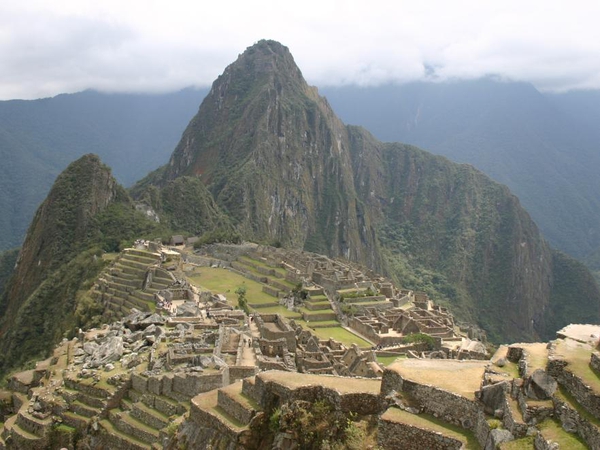Peruvian authorities have successfully completed the evacuation near Machu Picchu where thousands of tourists were stranded for days by mudslides and flooding.
‘Not a single tourist remains in Machu Picchu or in the town of Aguas Calientes’ near the ancient ruins, said Tourism Minister Martin Perez.
He added that members of the police and military conducted an extensive search of hotels and homes ‘to verify that there was not a single tourist in the zone.’
He said diplomats from several countries whose nationals were among the 3,500 tourists trapped since Monday had gathered in the former Inca capital of Cusco and were brought to the site to confirm that no visitors remained in Machu Picchu.
The Department of Foreign Affairs said at least nine Irish people were believed to be among those stranded.
‘Today we evacuated 1,460 tourists. In total, over four days, we rescued 3,500 tourists in 276 flights,’ Mr Perez said.
Torrential rains had drenched the region, washing out roads and sections of a railway between Cusco and Aguas Calientes, and causing floods and mudslides that affected more than 25,000 people. Seven people were killed, authorities said.
Twelve helicopters, six of them loaned by the US, had been flying tourists out of the area since Tuesday, taking them to a nearby village where they were put on buses to Cusco.
Argentina and Chile also sent military planes to Cusco to repatriate their nationals.
Earlier, reports said some tourists did not want to be taken out of the region, but Mr Perez said all visitors would be evacuated.
‘The air bridge will keep going until all the tourists are evacuated, even though there are some who don't really want to go, who are happy to stay. But we are making the evacuation of all mandatory,’ he had said.
Several young international backpackers were helping locals fill sand bags and form stone walls against the nearby Vilcanota river, which was threatening to flood homes.
The government sent one tonne of food to Aguas Calientes, the village adjacent to the Machu Picchu site, as well as $400,000 to replenish emptied ATMs.
The tourists became trapped at Machu Picchu when landslides cut the railway to the area.
The alternative route is a four-day hike along the Inca Trail that only 10% of visitors use.
That path was also cut by landslides, resulting in the death of an Argentine hiker and his Peruvian guide.
Sources from Peru Rail said it could take two months to repair the railway, a period President Alan Garcia suggested would be too long of a delay for visits to resume to one of the most popular tourist destinations in Latin America.
‘I don't believe it will take eight weeks. We will set up helicopter flights to take tourists there, but it's possible it will be more expensive’ than the train, Mr Garcia said from Cusco.
Machu Picchu attracts more than 400,000 visitors a year. The 15th-century Inca citadel is located on a high mountain ridge 70km from Cusco.

